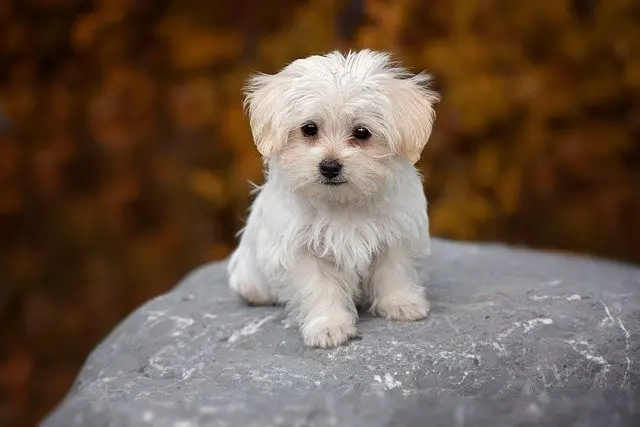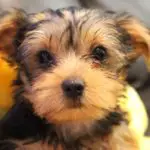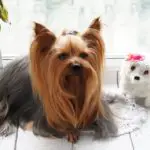‘When do puppies get their adult coat?’
So the exciting time has come that your new puppy is home. You cannot wait to take it out and show it off.
But wait.. where is that luxurious shiny coat that the pup’s mom has?
When will your pup develop the same? Will its color change? And why is my dog having this weird puppy coat?
You’ve come to the right place if you are wondering ‘when do puppies get their adult coat?’
Today we will answer all your queries about puppy coats and how and more importantly, when it will transition to the adult coat.
When Do Puppies Get Their Adult Coat?
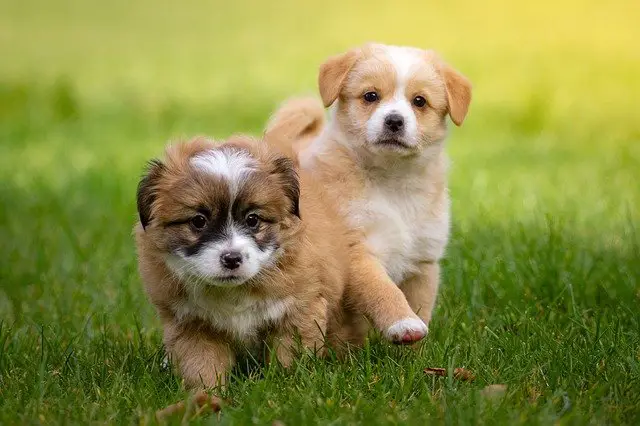
Most puppies of all breeds start losing their baby coats (puppy coats) between the ages of 4 and 6 months.
Naturally, this will vary from breed to breed but you can start expecting some major color changes and quite a bit of shedding starting around 4 to 6 months.
Small breed dogs like Chihuahuas and pugs mature faster than larger dog breeds like Golden retrievers and mastiffs. Some large breed puppies only reach adulthood around the age of 3 years! Naturally, these breeds will remain ‘puppies’ for longer than most small dog breeds.
As a result, you can expect these breeds to retain their puppy looks longer as well.
How Long Does it Take for Puppies to Lose Their Puppy Coat?
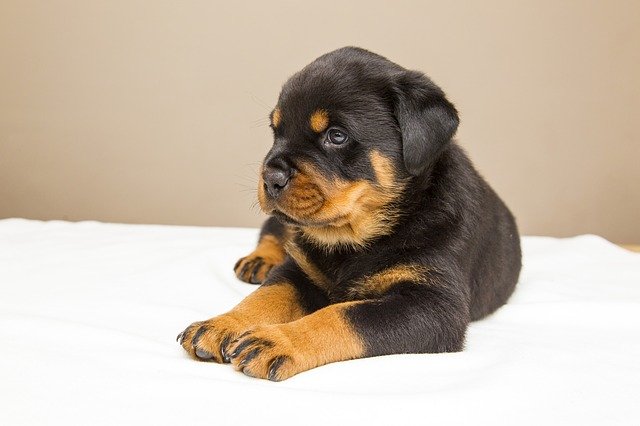
The time it takes for a puppy to lose its puppy coat will vary from breed to breed.
In some dogs, the process may start early – around 12 weeks or 3 months and will be completed by the time it is an adult- around 1 year old.
In other dogs, the process might start much later – around 7 to 9 months of age – and will be completed only once the dog is about 1 ½ to 2 years of age. Breeds like Pomeranians are known to take nearly 2 years to change from puppy coat to adult dog coat.
In short: the process of changing from puppy coat to adult dog coat can last anywhere between 6 to 24 months depending on the dog’s breed, genes, nutrition, hormones, etc.
What are the Major Differences Between Puppy Coat and Adult Coat?
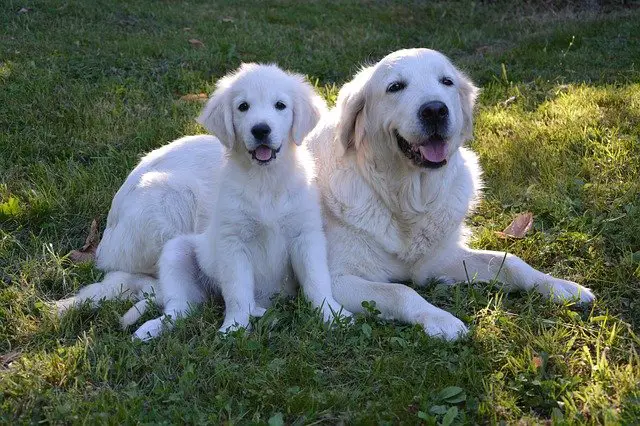
| Features | Puppy Coat | Adult Coat |
| Texture | Soft and fluffy | Thicker, stiffer. Depending on the breed it can be curly, wavy, silky, straight, wiry, etc. |
| Appearance | Often ugly, fuzzy, patchy hair loss, irregular coloring, appearance of patches of colors, certain areas like eyes may show strange hair loss/hair growth making the eyes look weird. | Fully developed adult coat is beautiful depending on the breed and its nutrition. |
| Layer | Usually single | Double coat or single coat depending on the breed |
| Patterns and colors | Usually no patterns. In later stages, patterns and colors may appear in patches sometimes giving a strange appearance. Some breeds change their entire birth- color as they develop. | Adult Dalmatians will develop spots, some breeds develop entirely different colors – Shih Tzus, Bedlington terriers, and English Setters etc. dramatically change colors from puppyhood to adulthood. |
| Function | Mainly warmth and body temperature regulation. | Warmth, protection, regulating body temperature, showing what the dog feels – scared, aggressive, etc. |
What Are the Stages of Changes That a Puppy Coat Undergoes to Change to the Adult Coat?
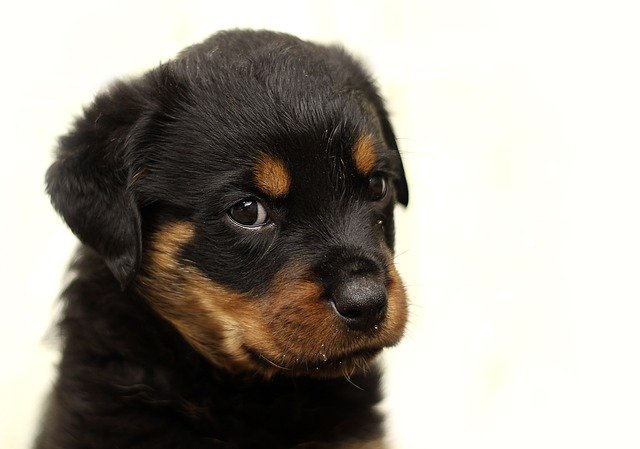
Between 0 to 4 months
Puppies are born with a thin, smooth or wooly layer of fur. This is softer and fluffier compared to an adult dog’s coat. It helps the pup regulate body temperature and also protects their skin from heat, cold, etc.
Between 4 – 8 months
This is the stage when the puppy coat starts shedding and developing into the adult coat. This time frame will vary from breed to breed and it depends on hormones, genes, indoor/outdoor temperatures, diet, and daylight hours.
The shedding of the puppy’s hair isn’t always visible as it is very slow and occurs over the period of several months.
Between 8 -10 months
In certain breeds, the puppy coat may start looking very ugly so much so that pet parents wonder ‘when do puppies get their adult coat?’ at this point. Many pet parents also wonder ‘why is my puppy shedding so much?’
In breeds like Dalmatians, the coat might start developing spots at this stage. Some breeds like Cocker spaniels, Bedlington Terriers, Shih Tzus, and completely change their colors.
Between 10-14 months
This is the age when the double coating starts in breeds that have double coats. You can distinctly see your pet develop its undercoat and top coat. So, a single hair follicle will now sprout the secondary hairs. It is a good idea to introduce your pet to basic grooming at this point.
In most breeds, the adult coat emerges by the time the pet is 14 months old. As mentioned earlier, in breeds like Pomeranians, this process could take longer.
Adult dog coat
Adult dog coats can be of 6 different types: long, silky, smooth, non-shedding, curly, and wiry. For allergy-prone humans, the coats of purebred poodle, Labradoodles, and Bichon Frise can be a Godsend. However, they need plenty of grooming.
Long-flowing coats of Lhasa Apso, Shih Tzu, Yorkshire terriers, and Skye terriers need a lot of daily grooming too else they tend to get matted and tangled. Wiry coated dog breeds like West Highland terriers, wire-haired Dachshunds, and Cairn terriers need regular hand-stripping to maintain the coarse texture of their outer coat.
Why is my Puppy Shedding so Much?

All dogs shed all year round and that includes puppies as well.
In short coated puppies, the shed hair isn’t seen as clearly as you’d see it in the long-haired breeds. That is why dog owners think that their pet isn’t shedding as much as a long coated breed like, say, Golden retriever. In reality, even short coated breeds shed heavily and if you have a black or dark colored short-coated dog, then you will likely see a lot of puppy fluff and loose hair all around the house.
1. Normal shedding occurs twice a year in most breeds
Almost all dogs shed all year round and some breeds with double coats will shed heavily twice a year – around spring and fall.
2. Female dogs shed after their heat cycle
If you have a female small dog breed, chances are that she will come in heat around 8 to 10 months of age. Once the heat cycle wanes, she will start shedding 10-12 weeks after her estrus.
3. Health issues
It is important to know the difference between normal and abnormal shedding. In some dogs, health issues like thyroid or endocrine disorders could lead to abnormal shedding. This is seen in the form of patchy hair loss, stunted hair growth, etc.
You might also see other symptoms like appetite changes, lethargy, excessive thirst, and so on. See your vet right away if you feel that your puppy’s shedding is out of the ordinary.
Good idea to groom regularly
The undercoat sheds first and the top coat follows. Regular brushing and grooming can speed up the process and help the new coat grow in sooner. Grooming will help prevent a lot of cleaning at a later stage. Remember, short coated breeds like Labradors tend to have sticky short hair which can get on your clothes, bed, rugs, etc. With regular grooming, you can prevent this hassle.
Do All Puppies Change Color as they Grow?
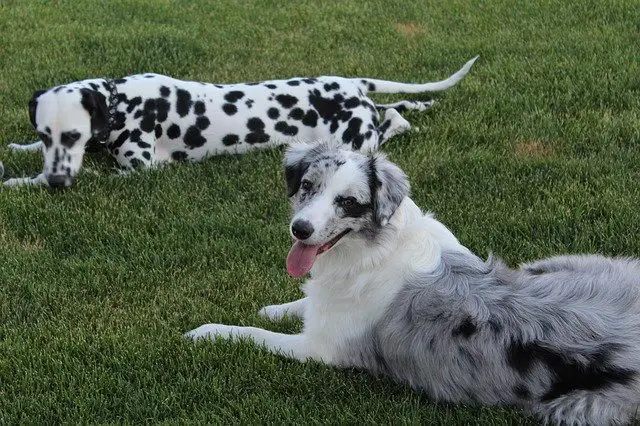
Puppy coat bears very little resemblance to adult coats. It changes in texture, the number of layers, and, in some breeds, even the color.
- Dalmatian puppies are born white but they start developing black spots after a few weeks.
- Some breeds like Bedlington terriers, Cockers, and Shih Tzus entirely develop different adult coat color as they mature.
- Breeds like Labradors might not have drastic color changes. If you have a white Labradoodle puppy, chances are that it will stay white even in adulthood.
- In Golden retrievers, the coat may turn silkier and darker as the dog grows. It also depends on the hormones, exposure to sunlight, and of course, nutrition.
Our indoor dogs do not have much exposure to the sunlight and artificial light will not impact the coat color as much as Mother Nature does.
What Dog Breeds Have Hair and Not Fur? Which Grooming Tools to Buy for Different Coat Type?
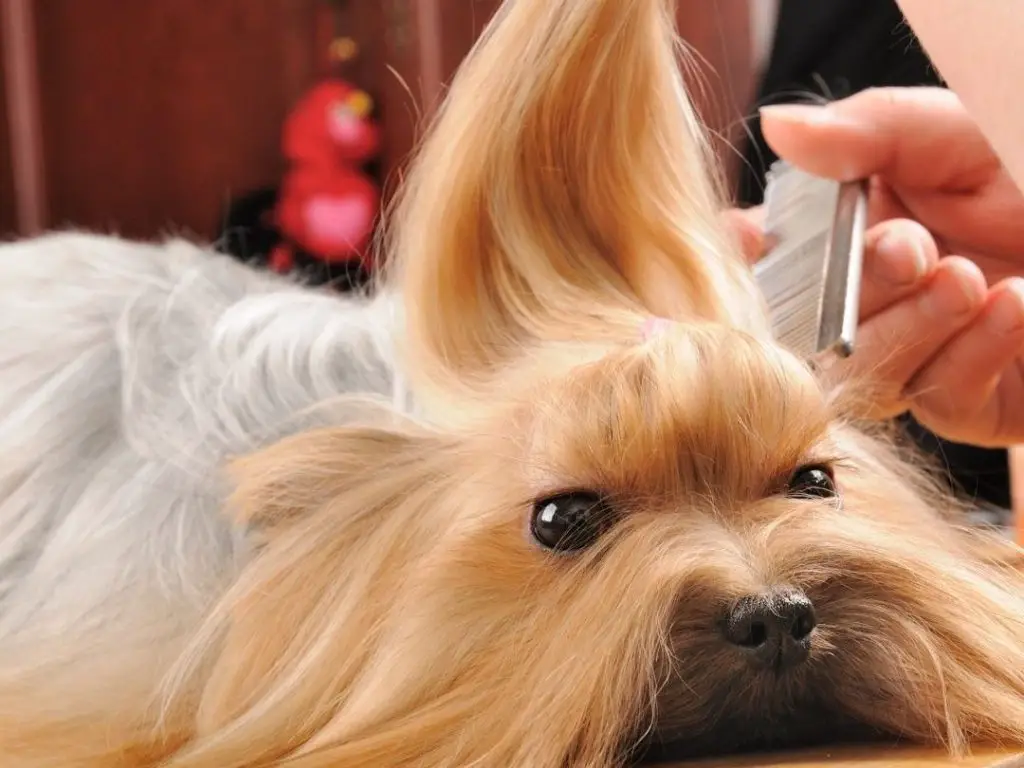
In dogs, hair is smoother and finer than fur. Dog hair can also be straight, curly, or wavy. This curly and wavy hair could trap loose hair which could result in matting, tangles, etc.
Here are different grooming tools you will need:
1. Double coated dog breeds
These dogs have two layers of furry coats so you need a rake, a comb, and a brush to groom them.
2. Terriers and wiry coated dog breeds
Terriers and wiry coated breeds have wiry hair that does not shed like normal hair. You need to hand-strip these in addition to regular grooming. Invest in a pin brush, a flea comb, and a stripping grooming tool for maintaining their coats.
3. Silky coated dog breeds
These include breeds like Yorkshire terriers, Maltese, and Shih tzus. They have hair and not fur. Invest in pin brushes and combs to keep their hair free from knots and tangles. Ask the groomer for a puppy cut to maintain their coat between grooming.
4. Short coated breeds
These include Labrador retrievers, smooth coated Chihuahuas, etc. Opt for slicker brushes and de-shedding tools, rakes, and grooming hand gloves.
How to Know what Kind of Coat a Puppy Will Develop?
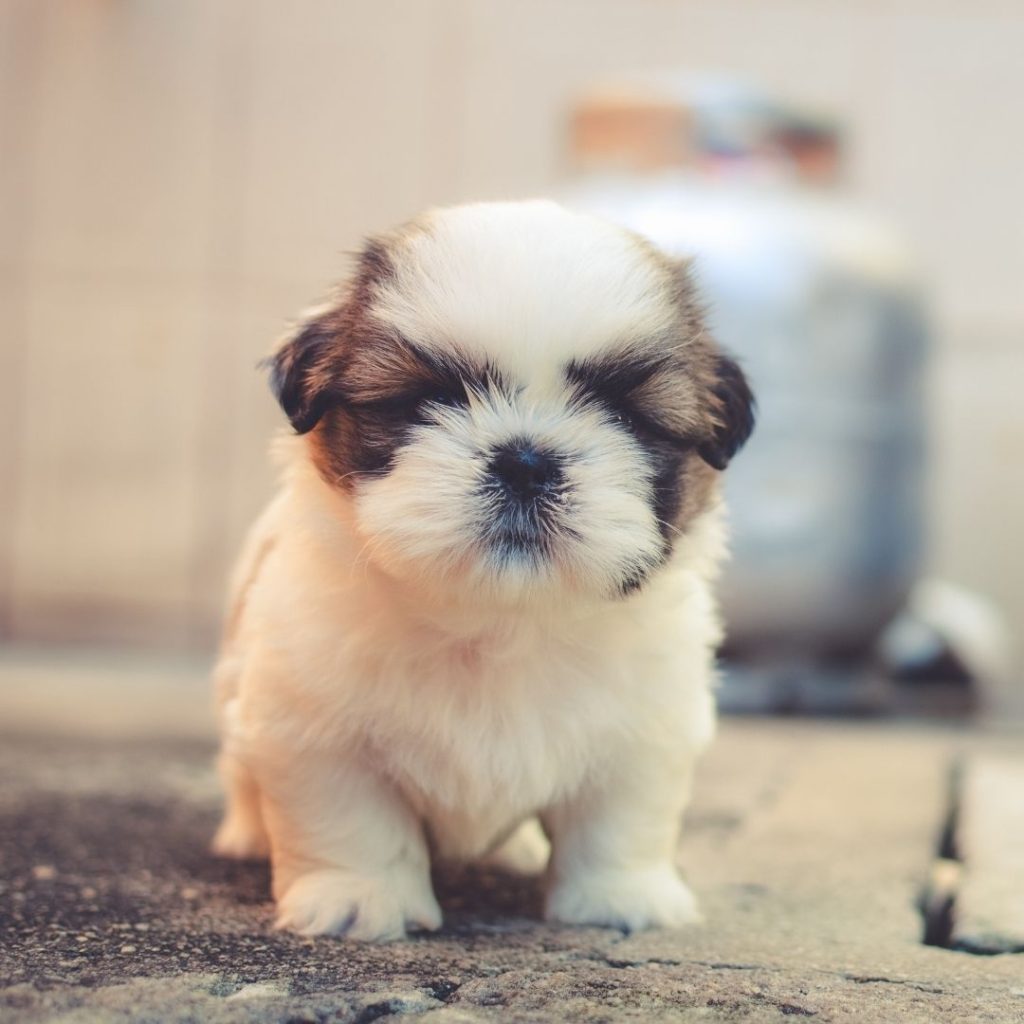
Sometimes, it can be difficult to tell which type of coat a pup will develop. It could be due to its mixed heritage or because you aren’t sure of its breed.
In any case, knowing what kind of coat a puppy will develop can come in handy later especially for grooming. You will also be better prepared as far as its grooming products and tools are concerned.
Here are some distinguishing characteristics of different coat types:
A. Low density coats
You see these in breeds like Dachshunds, long or short-coated Chihuahuas, Greyhounds, etc.
Typically, the puppy will have thin layer of fur and might even need protection from the harsh weather elements – jackets, sweaters, etc. The skin is easily visible through the coat.
B. Medium density coats
You will see these in dog breeds like Maltese, Rottweiler, German shepherd, Golden retrievers, etc.
These puppies have thicker fur and the double coats will appear by the time the dog is nearly an adult. You can easily groom your puppy at home but some breeds might need special professional grooming.
C. Tons of fluffy or shaggy hair
These dog breeds include Pomeranians, Siberian husky, malamutes, Pyrenees, and Bernese Mountain dogs. You won’t be able to see their skin through their furry coats. Grooming can be a chore for such dogs as you’d be dealing with a lot of shedding of winter coat.
FAQs on When Do Puppies Get Their Adult Coat?
1. How to tell if your puppy will have single or double coat?
A puppy with single coat will simply shed the hair as is while that with a double coat will shed woolly mats of hair. Also, single coated pups have soft straight hair forming their top coat whereas in double-coated breeds, the hair is not straight. The undercoat is usually shorter than the top coat in double coated dogs. The hair will have a dense, woolly texture as well.
D. How long does the ‘puppy uglies’ stage last?
Puppy uglies can last for a couple of months in most dog breeds, but in Pomeranians, it could last for nearly half a year.
2. How to tell if a Goldendoodle puppy will have curly hair?
If the goldendoodle coat consists of tight curls around the mouth in puppyhood, then chances are that it will have a curly coat in adulthood.
Conclusion
When do puppies get their adult coat?
Puppies start shedding their puppy coat around 4-to-6 months of age. They develop their adult coats by the time they reach maturity. This is usually at 12 to 14 months in most dog breeds.
However, it varies from breed to breed and will depend on factors like hormones, nutrition levels, exposure to the weather elements, and genes.
We hope this guide helps you take good care of your dog’s coat.
